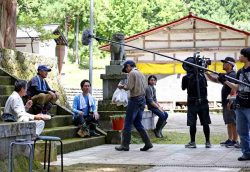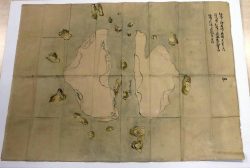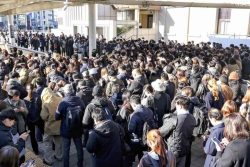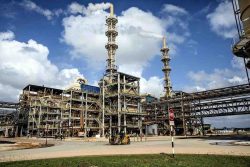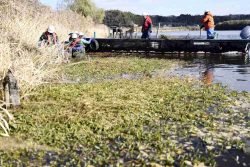Disaster Preparedness / Prepare for Quake-Induced Long-Term Water Outages by Stockpiling Water; Aim For 3 Liters Per Person Per Day
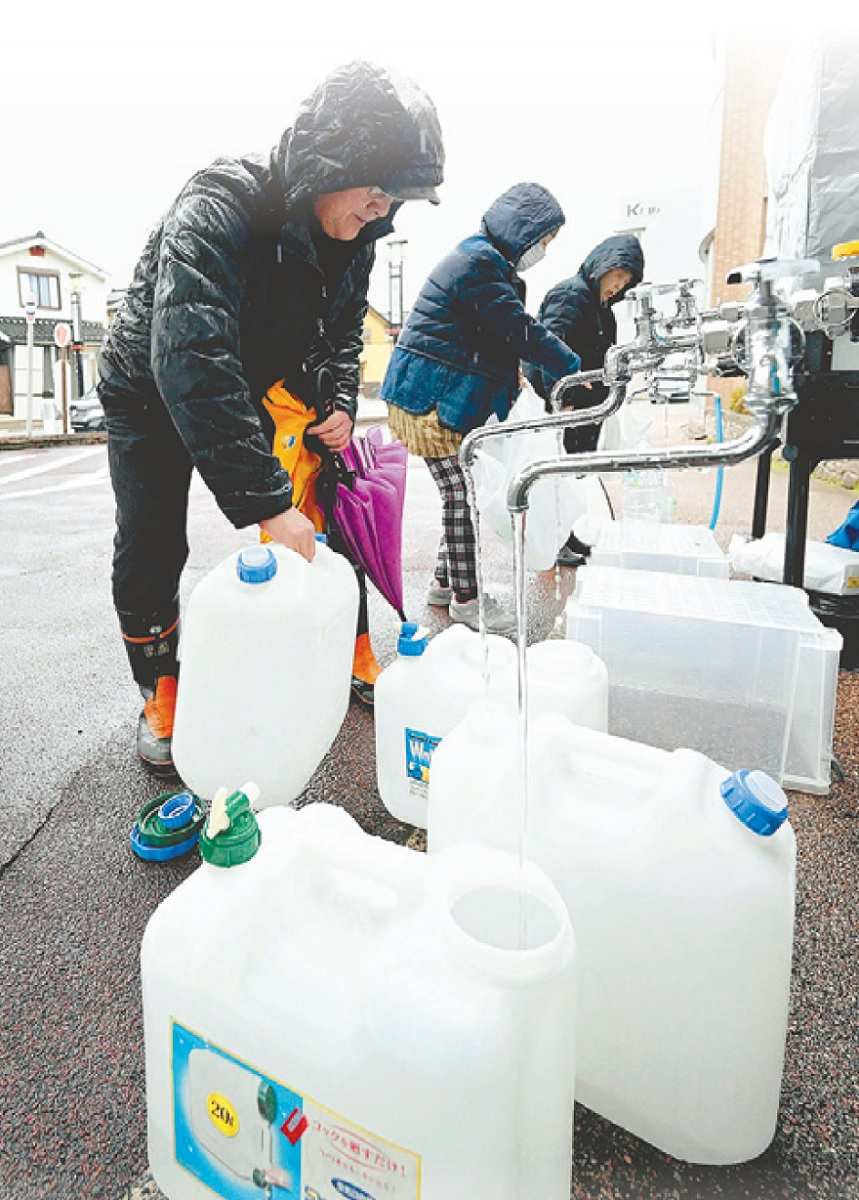
People fill their plastic containers with water at an evacuation center in the area hit by the 2024 Noto Peninsula Earthquake. Photo taken in January in Wajima, Ishikawa Prefecture.
10:00 JST, June 20, 2024
A major earthquake could heavily damage water facilities and knock out the supply. Restoring water service could take a long time, which would lead to long-term water outages.
It’s therefore important to stockpile water to ensure there’s always enough to drink and use at home. In the event of a disaster, everybody should be conscious of saving water and use as little as possible.
◇◇◇
Preparations to deal with water outages after disasters

Water outages in the wake of major earthquakes (reaching maximum seismic intensity of 7)
*Compiled from sources including central government documents.
- Widespread damage to water supply facilities during a massive earthquake
- → Prolonged water outages due to delays in restoration work
Using nearby emergency water supply base
– Use a water supply tank set up at an evacuation center, municipal office, or school
– Prepare an empty plastic container, plastic bottles, or water supply bag to be carried on the shoulder
- If a disaster hits Tokyo
- ● 213 emergency water supply stations to be set up
- ● At least one station within a radius of about 2 kilometers of any home
- ● People can check the location and status of operation with an app made by the Tokyo waterworks bureau
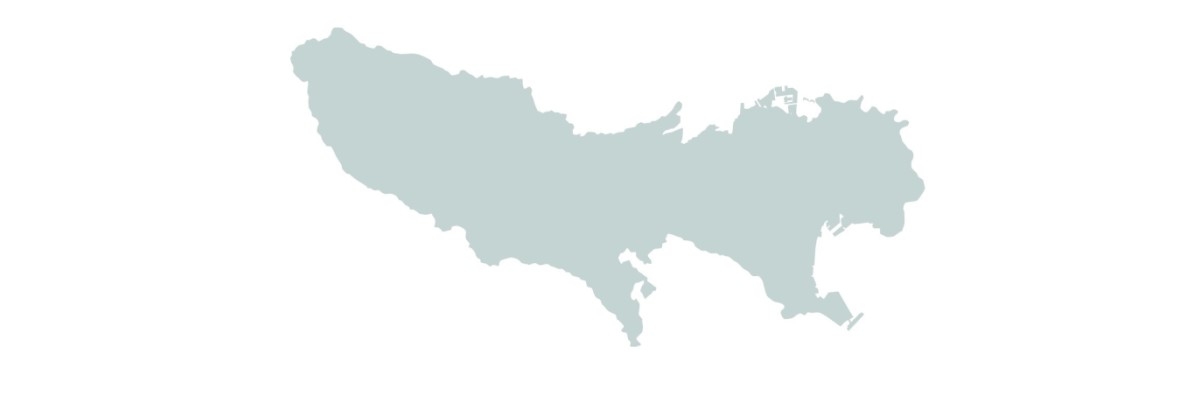
Advice for reducing water usage
- Washing hands, cooking and eating
- ● Wash hands and dishes using a hole opened at the bottom or lid of a plastic bottle
- ● Use paper dishes and cups and disposable chopsticks
- ● Cover dishes with plastic bags or plastic wrap
- Cleaning your body, using toilets and oral care
- ● Remove dirt from your body with disposable sanitary towels used for bed bathing and use dry shampoo to remove dirt from hair
- ● Use portable toilets
- ● Cover dishes with plastic bags or plastic wrap
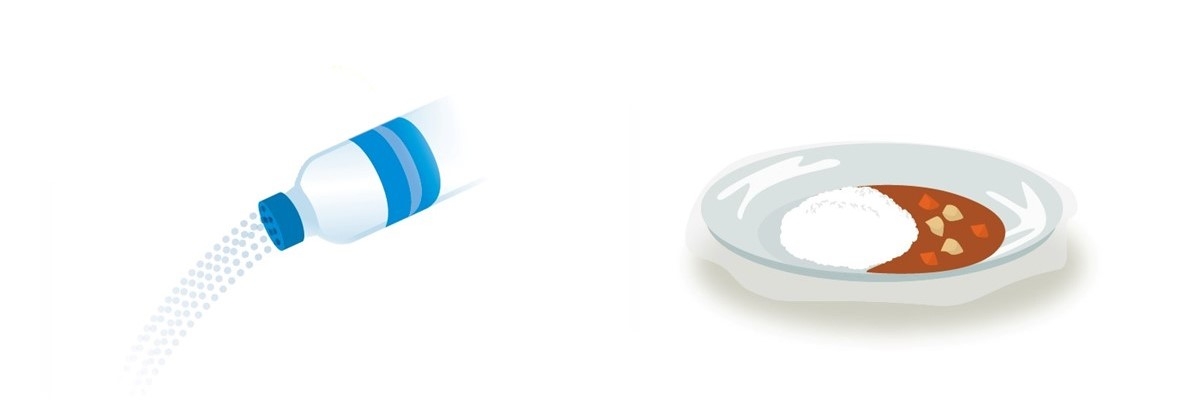

Measures to stockpile water at home
Recommended amount for water stockpile at home

◇◇◇
Quake-proofing water supply facilities lags in rural areas
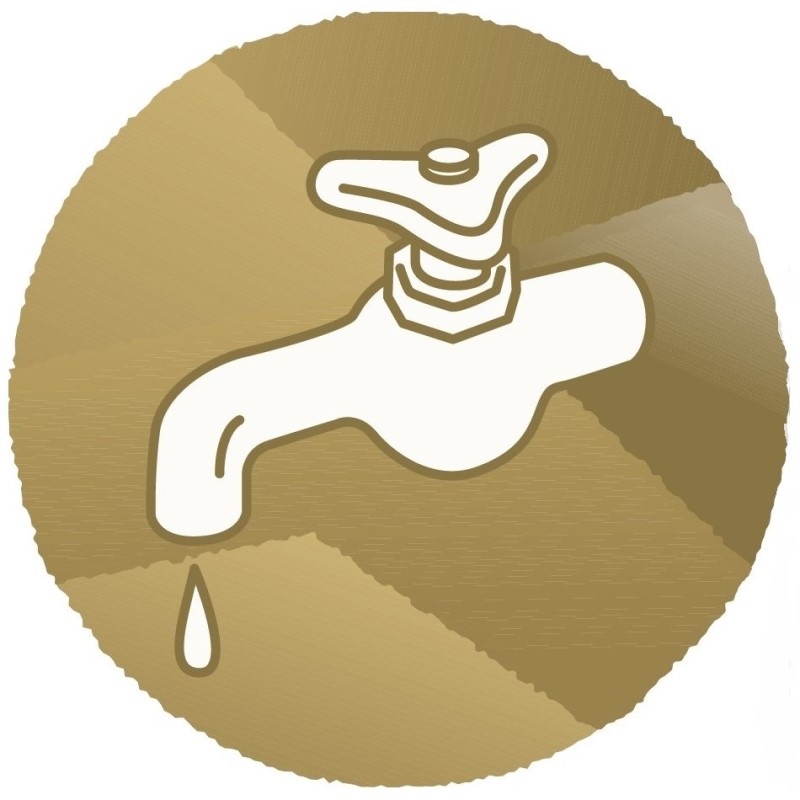
After the Noto Peninsula Earthquake on Jan. 1, up to 137,000 households in six prefectures experienced water outages.
Disaster victims lacked sufficient water to drink and use at evacuation centers, and sanitation in facilities like toilets deteriorated. Many of the victims had no choice but to evacuate and take shelter at secondary locations outside the affected areas.
Masakatsu Miyajima, a professor emeritus of Kanazawa University and scholar on waterworks disaster prevention, inspected water purification plants and water service pipes after the earthquake in Suzu, Wajima, and Nanao in Ishikawa Prefecture.
He noted, “Not only water pipes but also important waterworks facilities, such as water purification plants and distribution reservoirs, were seriously damaged.”
He believed that the long time it took to assess the damage, which led to prolonged water outages, was due not only to the disrupted road networks and snowfall but also a shortage of operational bases for workers restoring the water service.
The statutory service life of water pipes is 40 years. Pipes in many communities are reaching this age, making quake-resistant water supply facilities a matter of urgency.
Residents can check the status of quake-resistant waterworks in their communities on the website of the Health, Labor and Welfare Ministry and other sources.
According to the ministry, as of the end of fiscal 2022, 42.3% of major water pipes in the country were quake-resistant, while 43.4% of water purification plants and 63.5% of distribution reservoirs were.
In rural areas, measures to implement seismic retrofitting in water facilities conspicuously lag those in urban areas. Many believe the discrepancy is due to population decline and a lack of financial resources and personnel in rural communities.
Miyajima commented: “It is important to increase the amount of earthquake-resistant water service facilities. Large-scale long-term water outages caused by earthquakes can occur anywhere. Residents need to have a sense of crisis and prepare for such an eventuality as if it were their own town.”
Quake directly below Tokyo could cut water supply by 26%
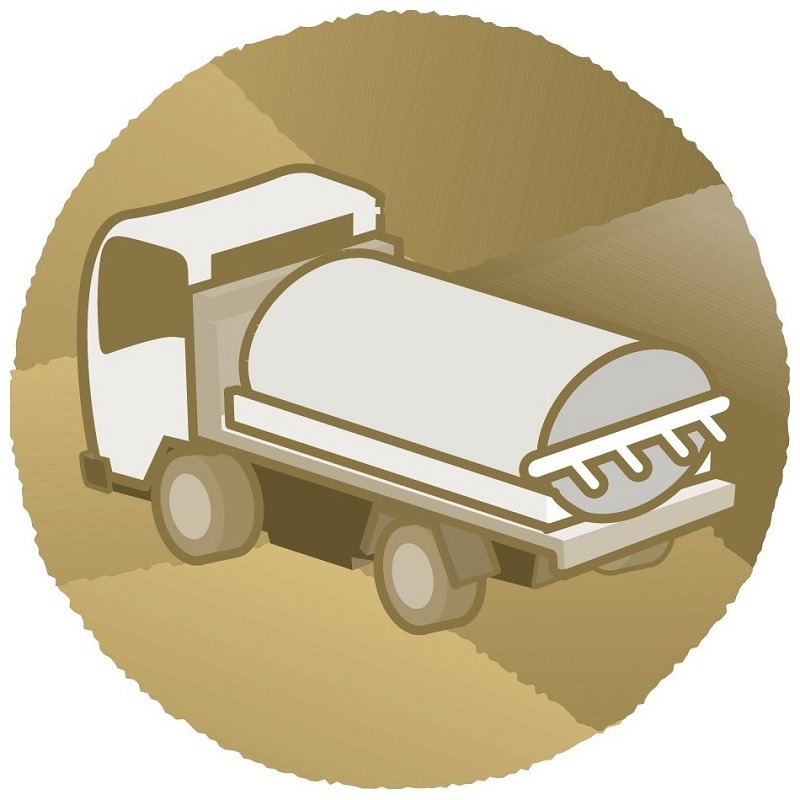
In its report on “estimated damage by a mega Nankai Trough earthquake” released in 2019, the Cabinet Office said that approximately 35.7 million people would be affected by water outages immediately after such an earthquake, specifically 60% to 80% in parts of the Tokai region and 40% to 60% in areas in parts of the Kinki region.
Meanwhile, the Tokyo metropolitan government assumes that an earthquake centered directly under the capital will knock out 26.4% of the city’s water supply.
To mitigate the potential damage, the Tokyo metropolitan government’s Bureau of Waterworks has been pushing ahead with “seismic joints in pipes.”
In this kind of joint, two sections of pipe are connected by fitting the end of one section into a cuff at the end of another section. The cuff is designed to keep the pipe sections from separating even when they might otherwise be pulled apart by an earthquake.
If the water supply is cut off, people should remain calm and use nearby water supply bases.
The Tokyo metropolitan government has developed “disaster water stations.” In the event of a disaster, the metropolitan government will cooperate with municipal governments in wards, cities, towns and villages to distribute water to residents through such means as emergency water tanks.
Residents can check the location of their nearest water station and the status of its operation via an app developed by the Tokyo metropolitan government bureau.
Other local governments have also designated locations where emergency water supply bases will be set up, so residents should check the locations in advance.
Water trucks will be dispatched to evacuation centers, schools, community centers and other locations in affected areas.
Residents should always prepare clean plastic containers to bring water home from the stations. A water bag that can be carried on one’s back will make it easier to transport the water.
Stockpile 9 liters of drinking water per person
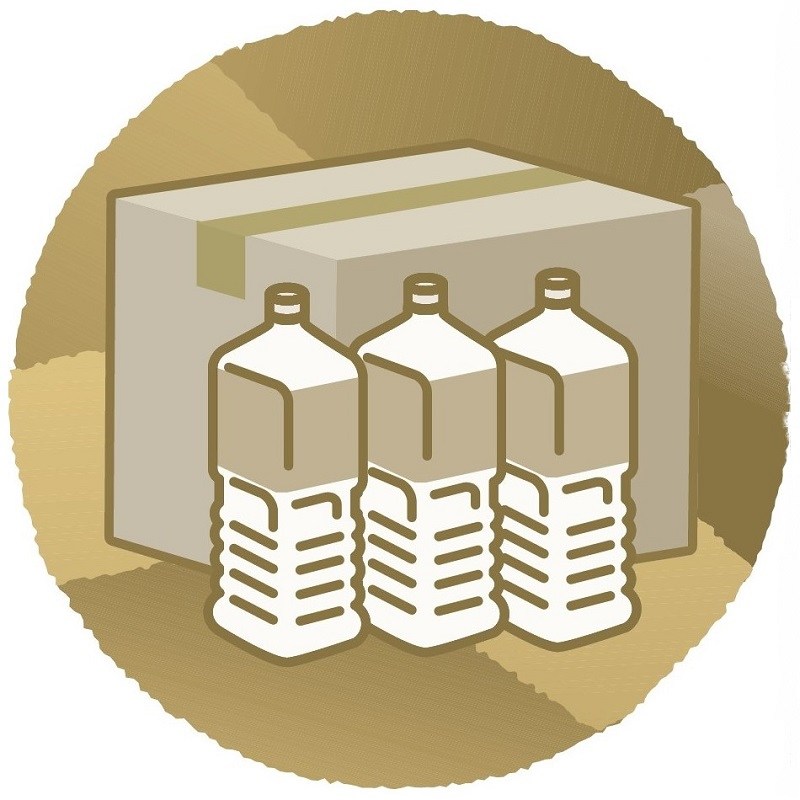
Preparing at home is also essential. Takamasa Wada, a disaster risk management advisor, says, “We should all make sure to always stockpile the necessary amount of water.”
The recommended amount of water to stockpile for drinking and cooking when preparing for a disaster is, as a general rule, 3 liters per person per day, or 9 liters per person for a minimum of 3 days.
Bottled water, such as PET bottles, should be prepared for daily use, including washing dishes.
Water for daily use should also be secured by filling an empty polyethylene container with tap water, for instance.
Wada himself stockpiles three cases containing six 2-liter plastic bottles of water. He drinks them regularly and buys a replacement case when they’re all gone. Meanwhile, he also has a 40-liter water tank filled with tap water, which he replaces regularly.
Nobue Kunizaki, the managing director of Risk & Crisis Management Educational Institute, said, “If, besides water, you prepare other drinks the family likes, such as vegetable or carbonated juices, they won’t get tired of drinking only water.”
As these stockpiles may eventually run short during prolonged water outages following a disaster, having a water storage tank on hand is recommended.
The tank can be installed along the exterior wall or under the floor of a house. According to the Tokyo-based Small Emergency Water Storage Tank Association, each tank can hold about 160 liters of water and be directly connected to a water service pipe. In normal times, the tank is refilled when the water is used.
During a disaster, the valve on the tank should be closed, and water should be drawn using a foot-operated pump.
Kunizaki says, “During a disaster, we should be conscious of saving water and try to reduce the amount of water we use.”
Opening a small hole in the lid or at the bottom of a plastic bottle will turn it into a handy tap. It’s also advisable to place plastic bags or plastic wrap on dishes before serving food so they don’t need to be washed and to use sanitary towels to bathe.
◇◇◇
Mt. Asama home to Japan’s volcanic disaster prevention measures
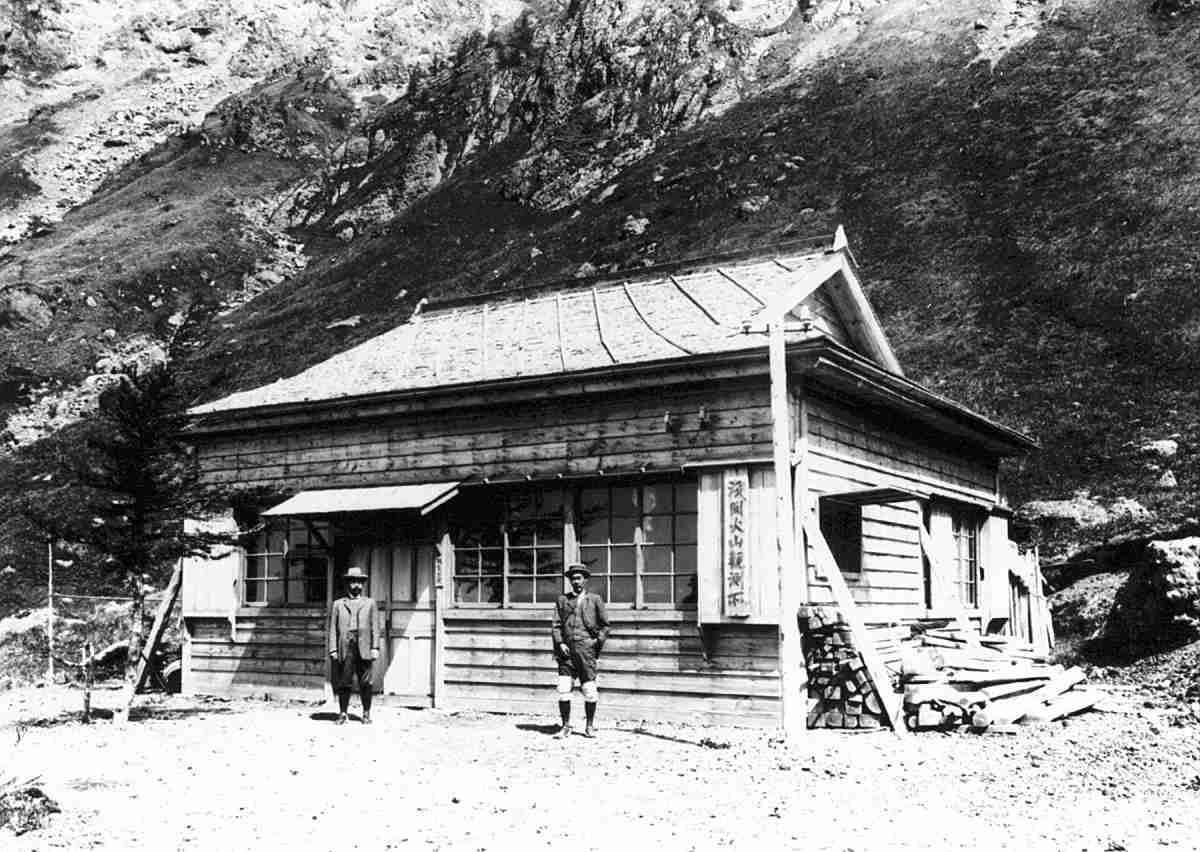
People stand in front of the Asama Volcano Observatory, which was built in 1911.
I came across a huge hole measuring more than 10 meters in diameter and 4 meters deep by a path leading to the top of Mt. Asama. It looked like it had been dug out by heavy machinery.
The hole was so large that I didn’t realize at first that it was left behind by a massive cinder that had been ejected during a volcanic eruption.
Japan is a volcanic country, with around 111 active volcanoes, which account for about 7% of the world’s total.
I climbed Mt. Asama last fall with a staff member of the Japan Meteorological Agency as a guide. Mt. Asama is 2,568 meters above sea level and located on the border of Nagano and Gunma prefectures, and it is known as one of the most active volcanoes in Japan, erupting more than 50 times in the past 100 years.
The aforementioned hole is said to be the result of a cinder that came from the 1950 eruption, which killed a high school student climber.
Although I was wearing a safety helmet, I shuddered with terror, thinking that I too would be dead if a cinder of this size suddenly fell on me.
Mt. Asama is not only an active volcano, it is also the birthplace of volcanic observation in Japan, with research activities being conducted there for a long time.
In 1911, Japan’s first volcano observatory was built on its mountainside. For the next 18 years, Meteorological Agency staff were stationed in the summer at the wooden observatory, which is only about 66 square meters in size.
To predict volcanic eruptions, they worked at the observatory under the constant threat of danger, such as windows being broken because of shaking and cinders hailing down during an eruption.
Today, universities and the agency remotely monitor volcanoes around the country 24 hours a day, with relevant information obtainable at any time through local governments and the agency. But this was not a matter of course back then.
We now have important knowledge regarding volcanic disaster prevention, such as eruption warning levels, in part because the people at that time made such enormous efforts.
Such things crossed my mind as I gazed at the site where the observatory once stood. The building burned down in a forest fire in the wake of an eruption, and only traces of the seismograph stand — covered in grass and moss — remain.
There have been recent moves to use the site for educational purposes on volcanic disaster prevention. In the city of Komoro, Nagano Prefecture, which is home to the former observatory, the site is soon expected to be designated as a cultural asset. A climbing tour is also planned.
Under the revised law concerning special measures to deal with active volcanoes, which went into force this year, Aug. 26, when the observatory was established more than a century ago, is designated as “Volcanic Disaster Prevention Day.”
Coming in touch with the history of our predecessors’ strenuous efforts is a beneficial way to give people a chance to think about volcanic disaster prevention. It is hoped that such a movement will spread.
"JN Specialities" POPULAR ARTICLE
-
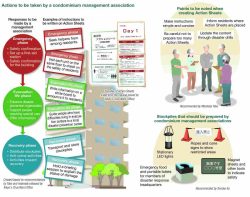
Disaster Preparedness / Apartment Management Associations: Instructions on What to Do in the Event of Power Outage
-
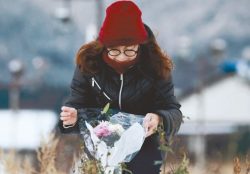
The Japan News / Weekly Edition (1/9-1/15)
-

Kawasaki Releases Guide to Sheltering at Home During Disasters, with Essential Tips for Apartment Residents
-

The Japan News / Weekly Edition (1/16-1/22)
-

The Japan News / Weekly Edition (12/26-1/1)
JN ACCESS RANKING
-

Japan Govt Adopts Measures to Curb Mega Solar Power Plant Projects Amid Environmental Concerns
-

Core Inflation in Tokyo Slows in December but Stays above BOJ Target
-

Tokyo Zoo Wolf Believed to Have Used Vegetation Growing on Wall to Climb, Escape; Animal Living Happily after Recapture
-

Univ. in Japan, Tokyo-Based Startup to Develop Satellite for Disaster Prevention Measures, Bears
-

JAL, ANA Cancel Flights During 3-day Holiday Weekend due to Blizzard




